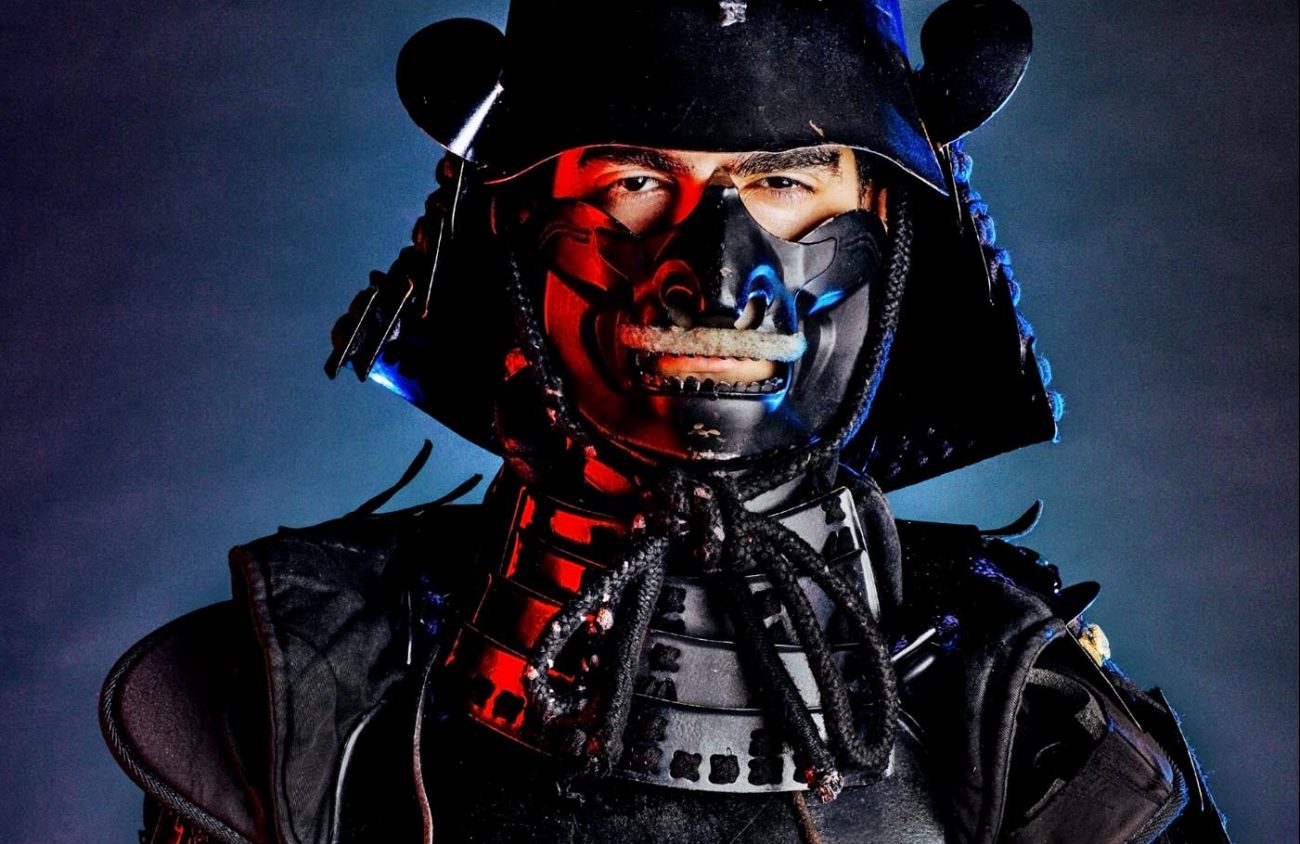You hear the rhythmic metal tick-tock of armor plates clapping against chainmail from a long way off.
The sun sinks in the west as three swordsmen reach the wide cement platform that covers the College Hill Reservoir.
Kurt Gerhard Studenroth lifts the steel helm from his cranium and offers his winded fellows hot tea from a half-gallon camping flask slung around his waist.
It’s the neoprene thermos that looks uncannily out of place; all other signs indicate we’re looking at Studenroth through a wormhole that connects South Eugene to medieval Europe.
The reality is much simpler than that, though. Think of it this way: Businessmen dress in suits and carry briefcases; police officers patrol the streets wearing guns on their hips and badges over their hearts; knights put on armor and swing swords.
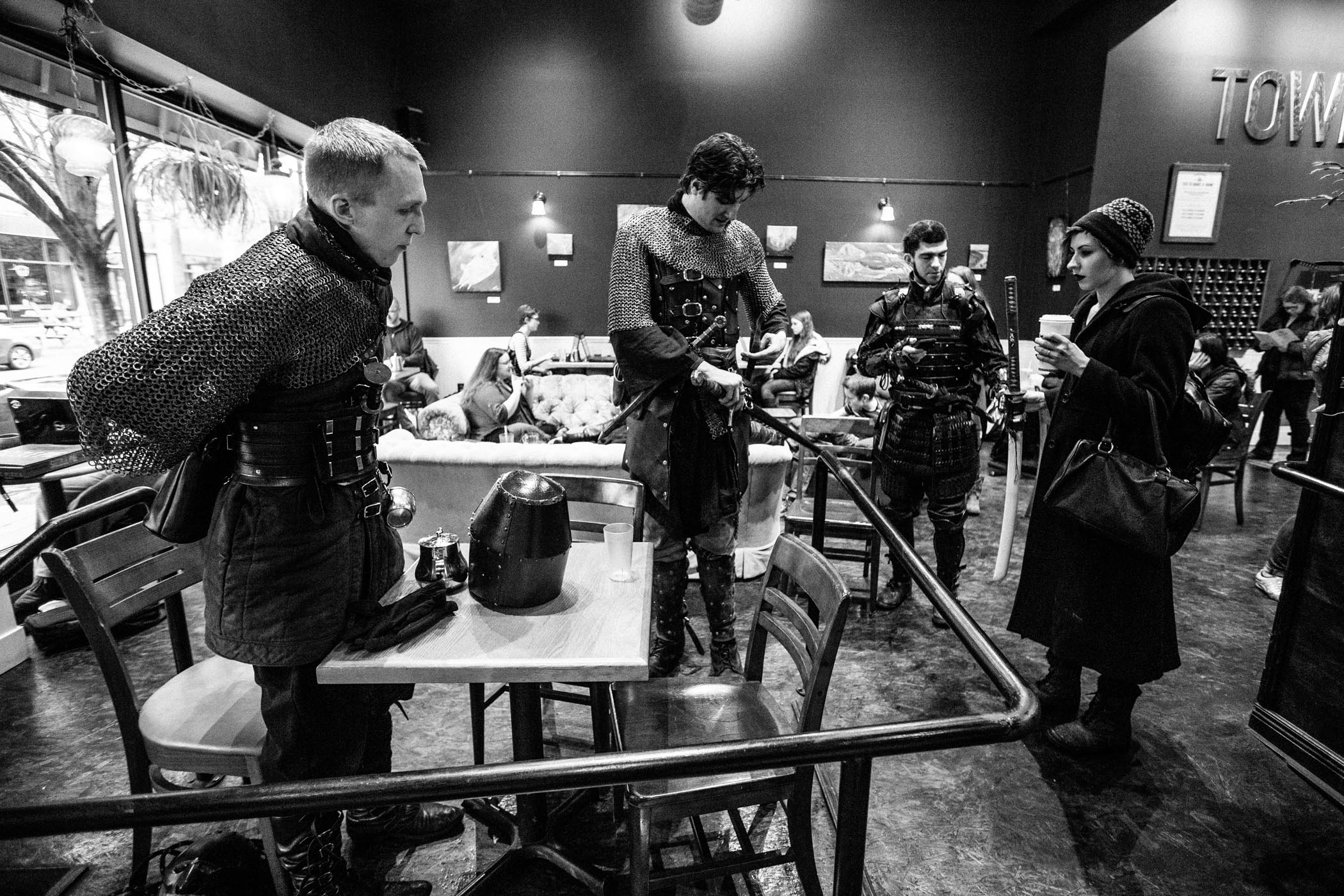
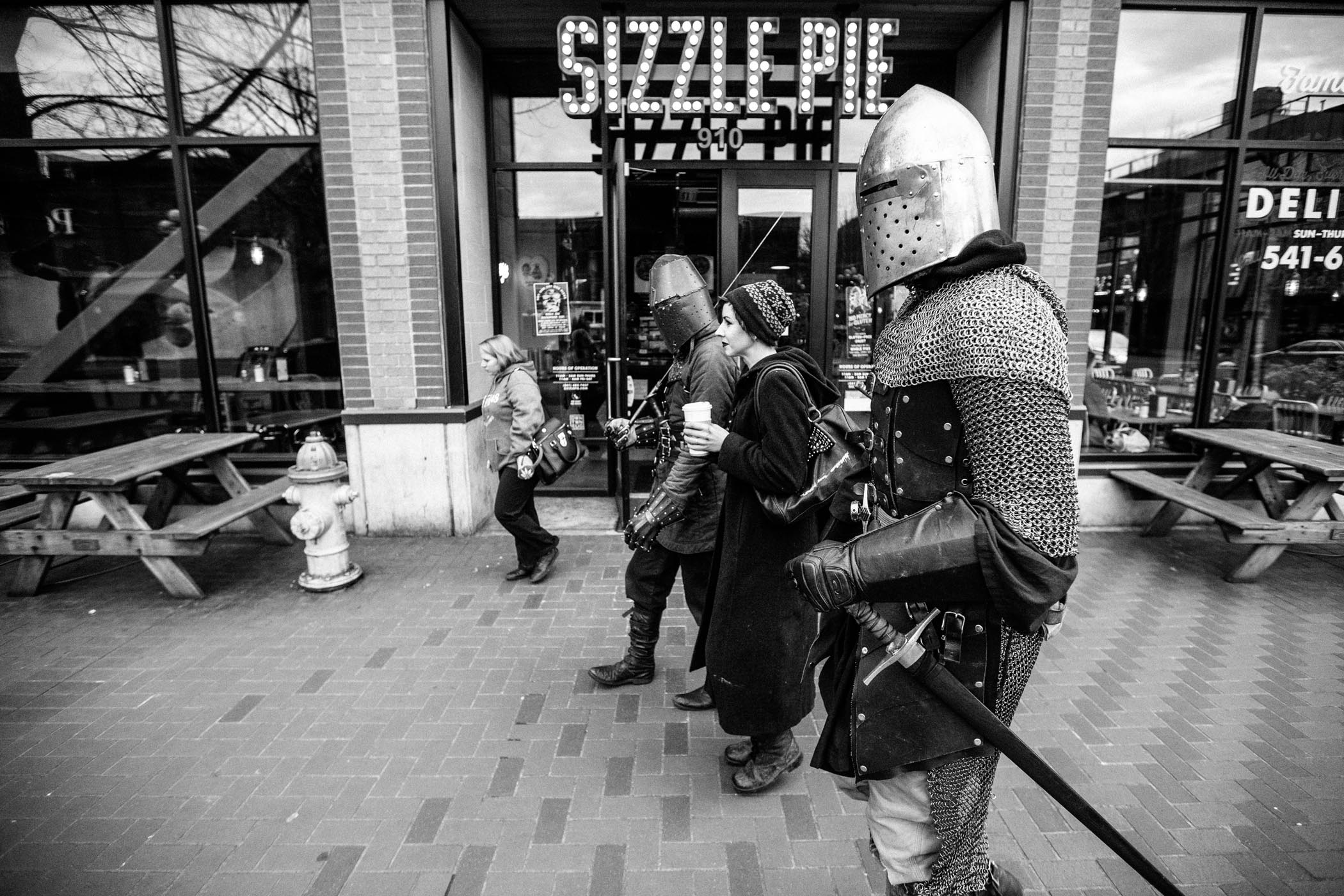
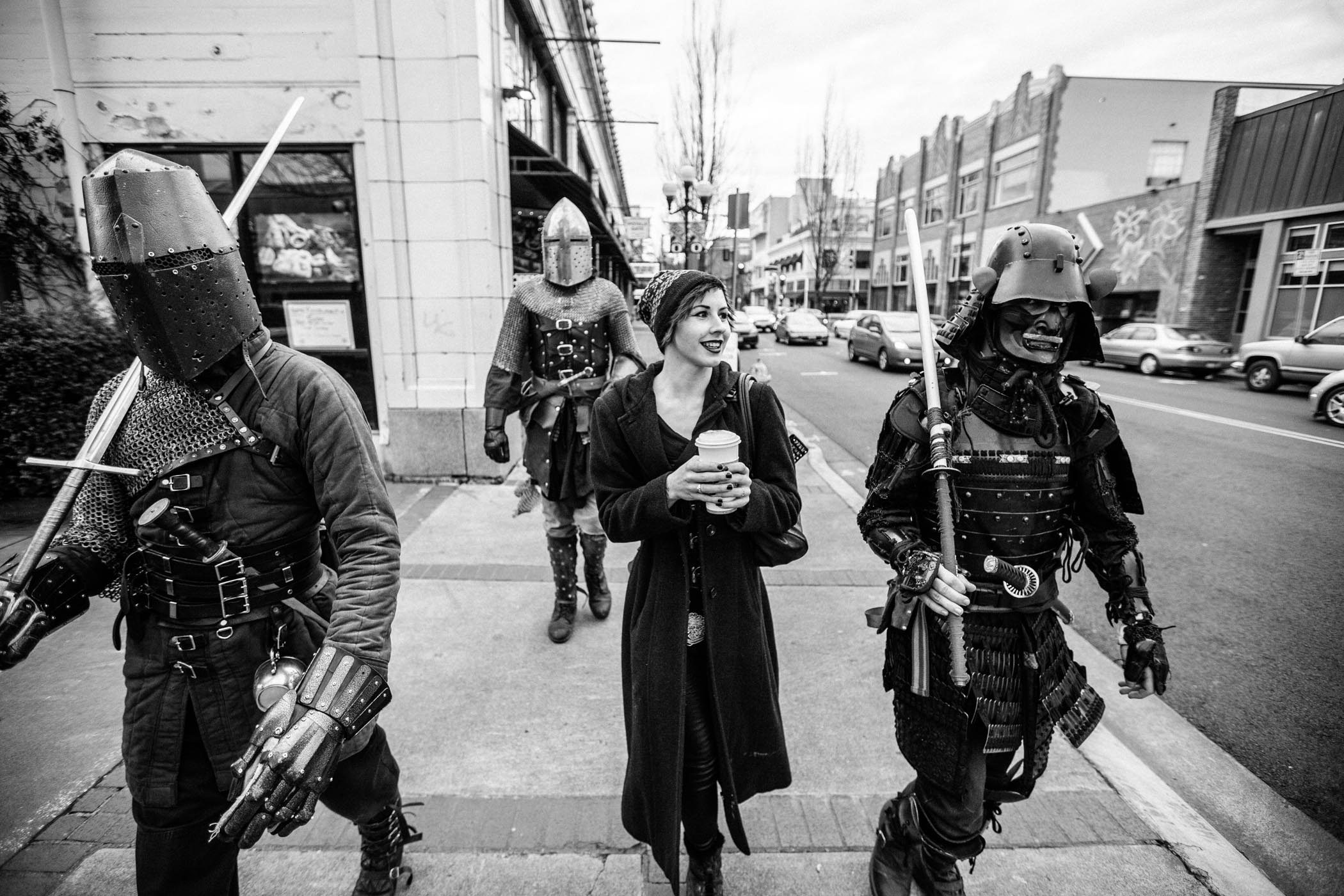

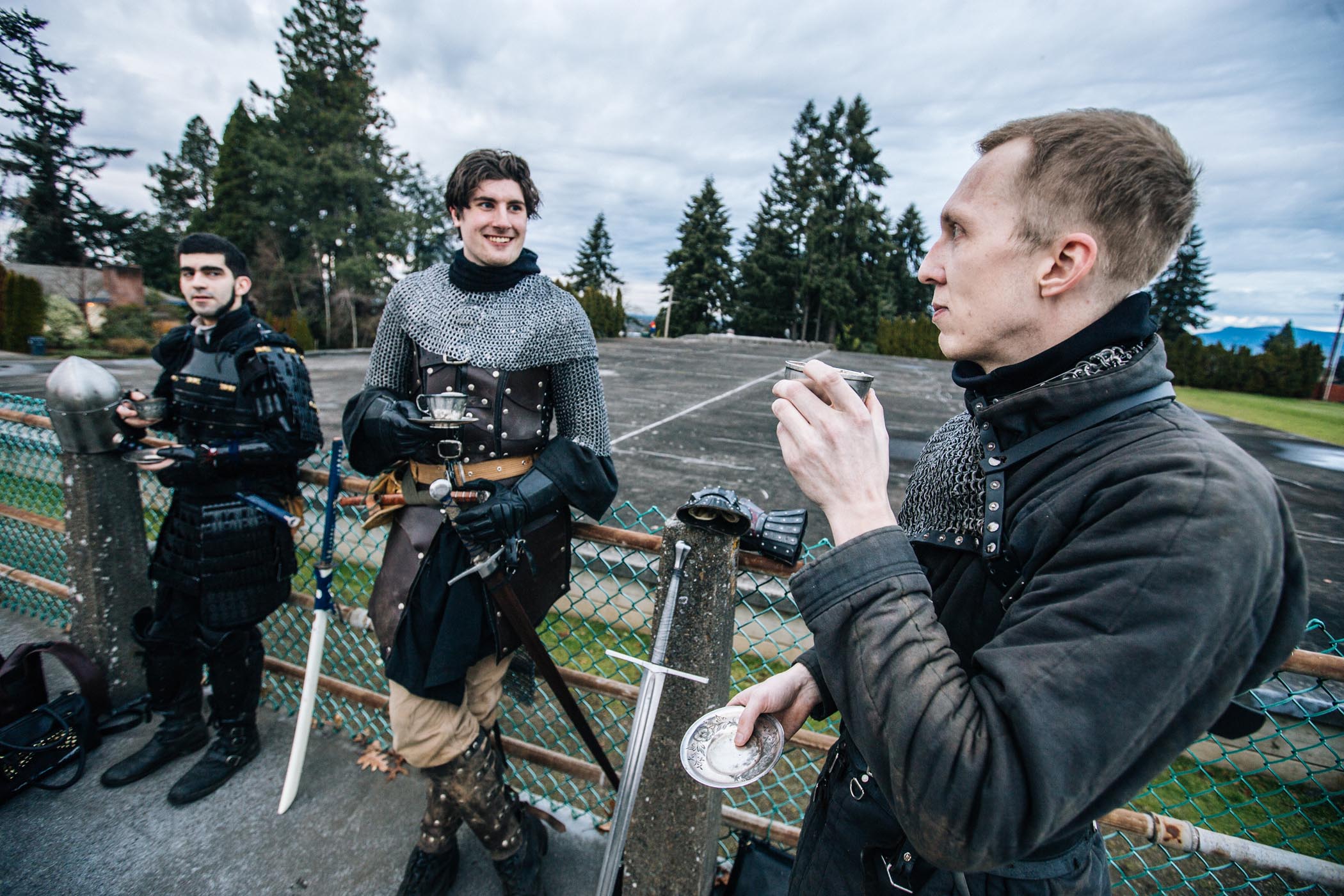
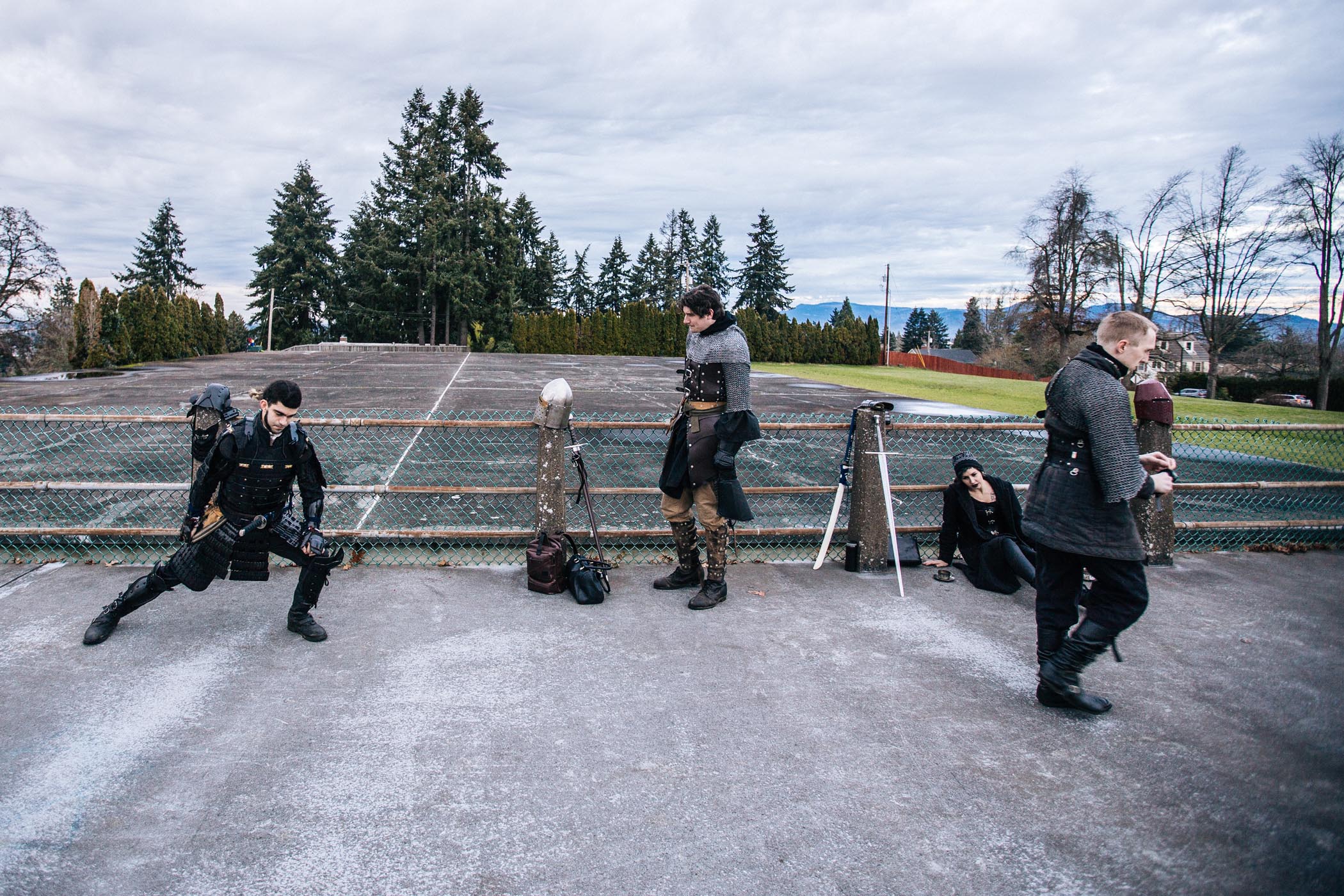
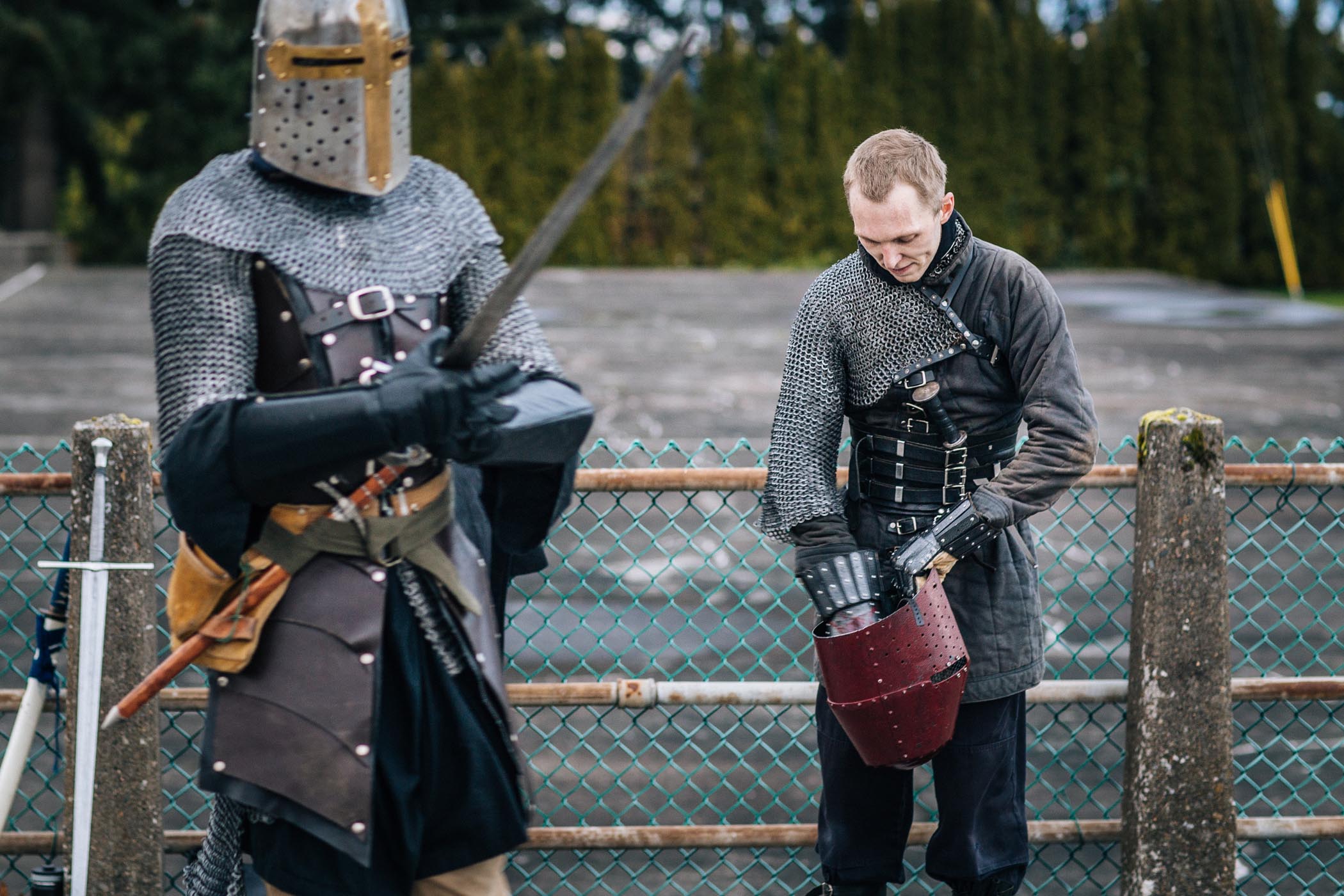
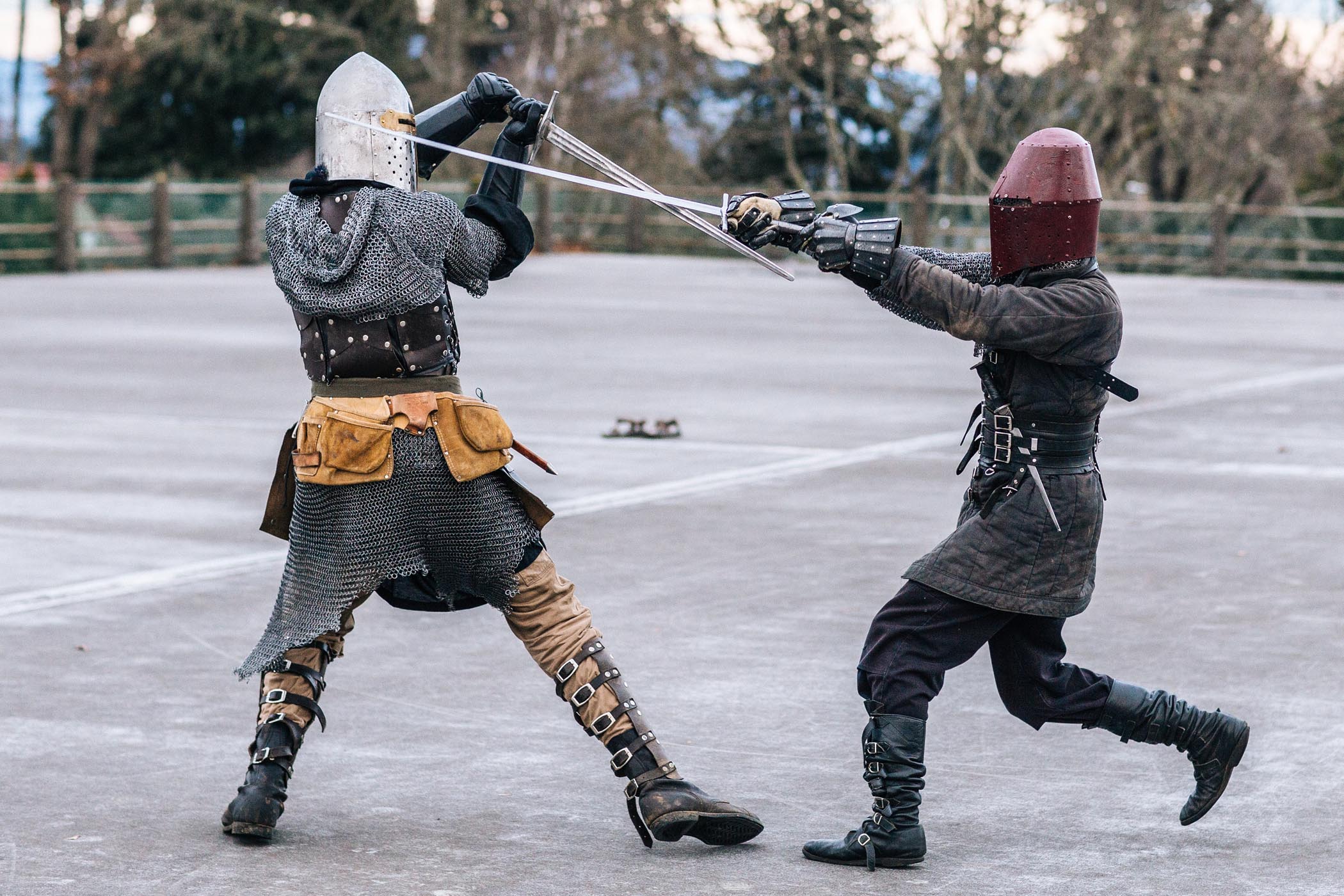
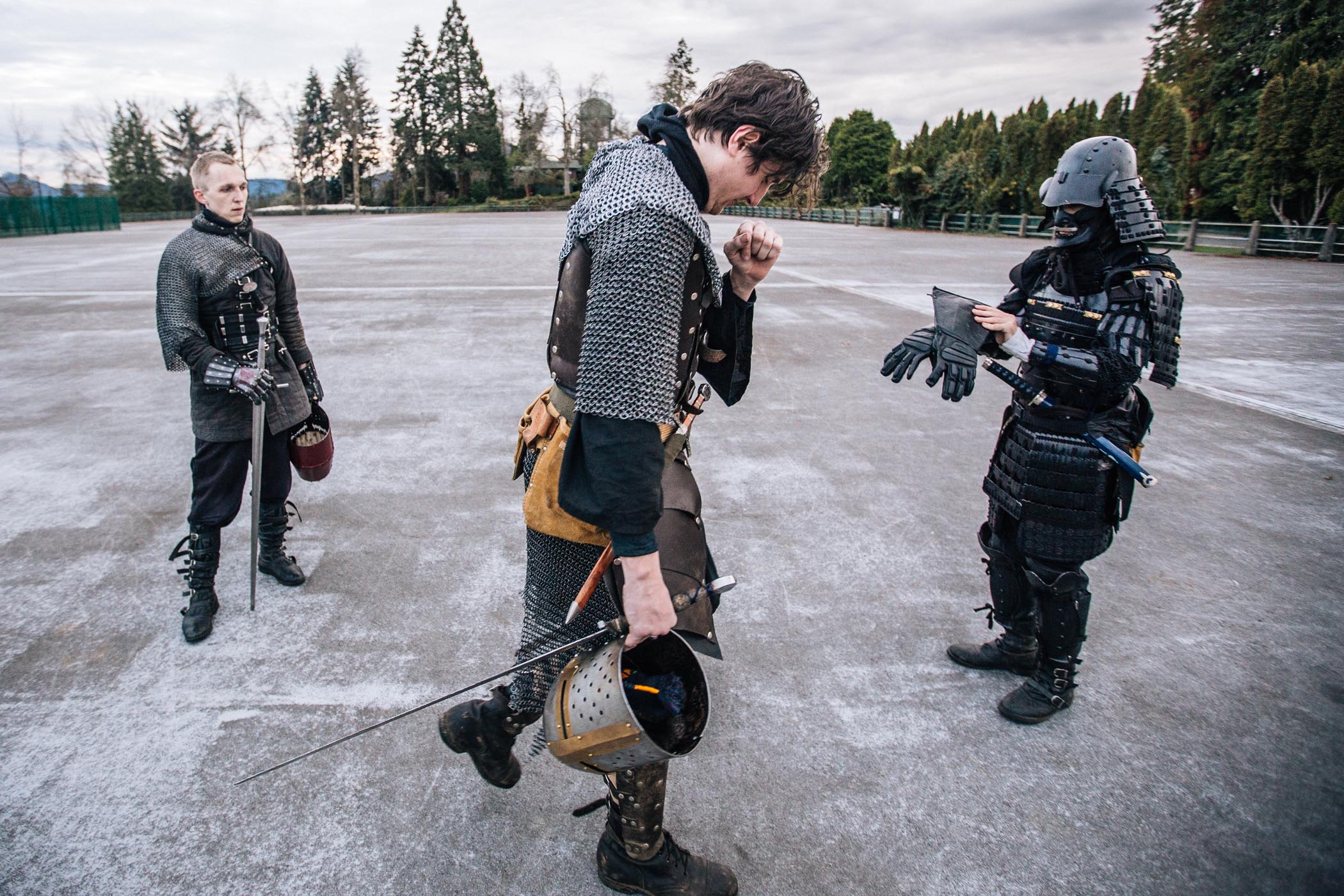
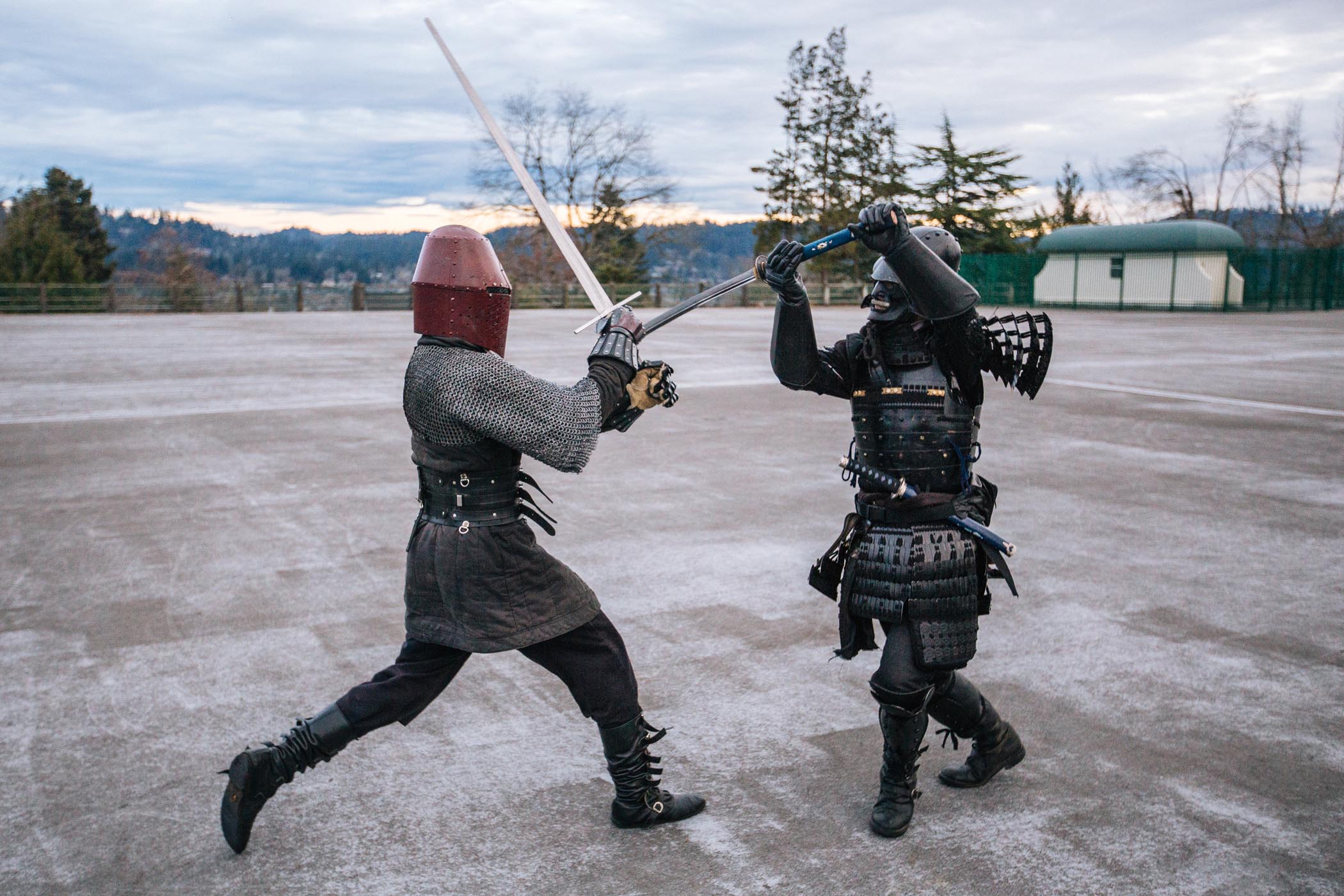
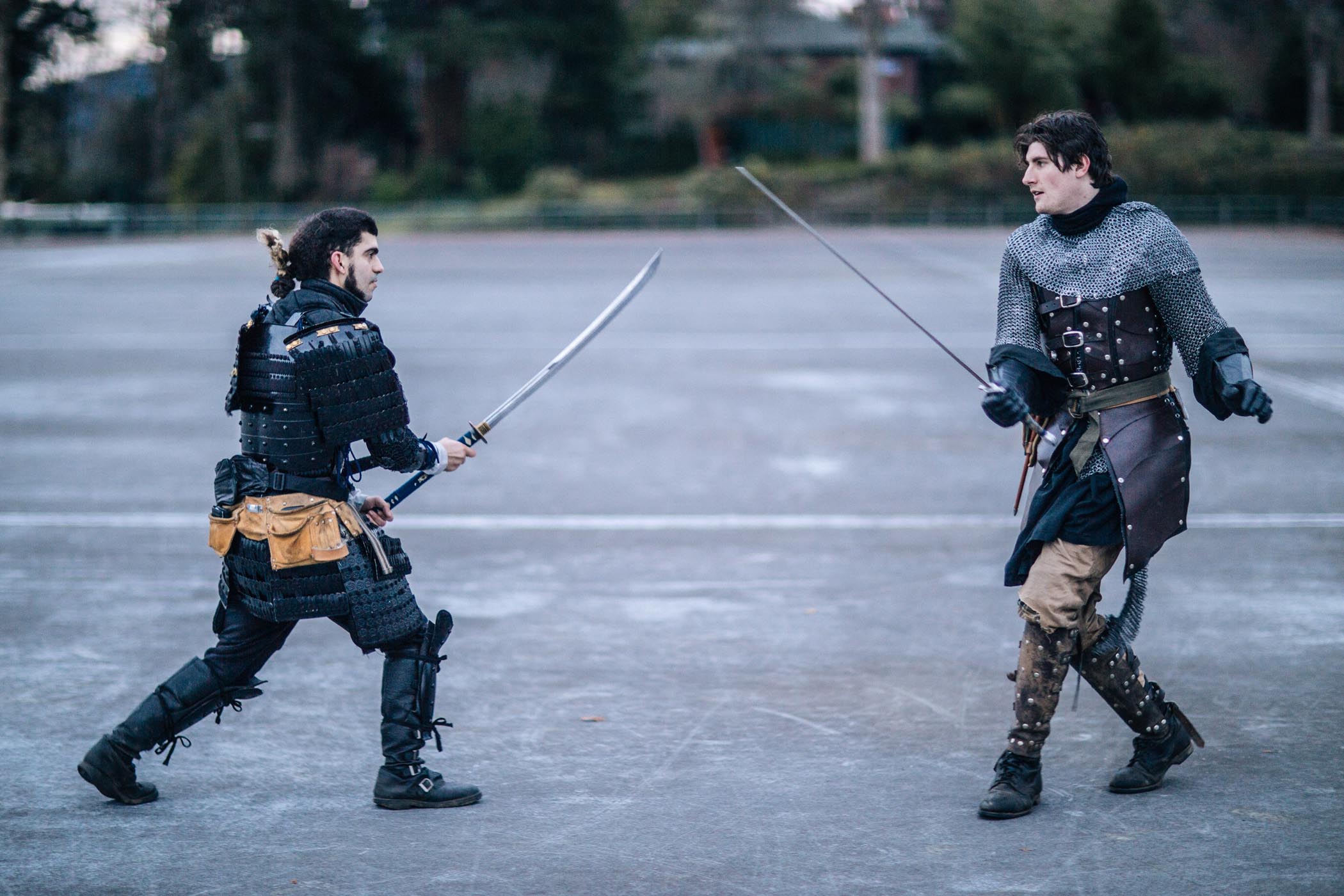
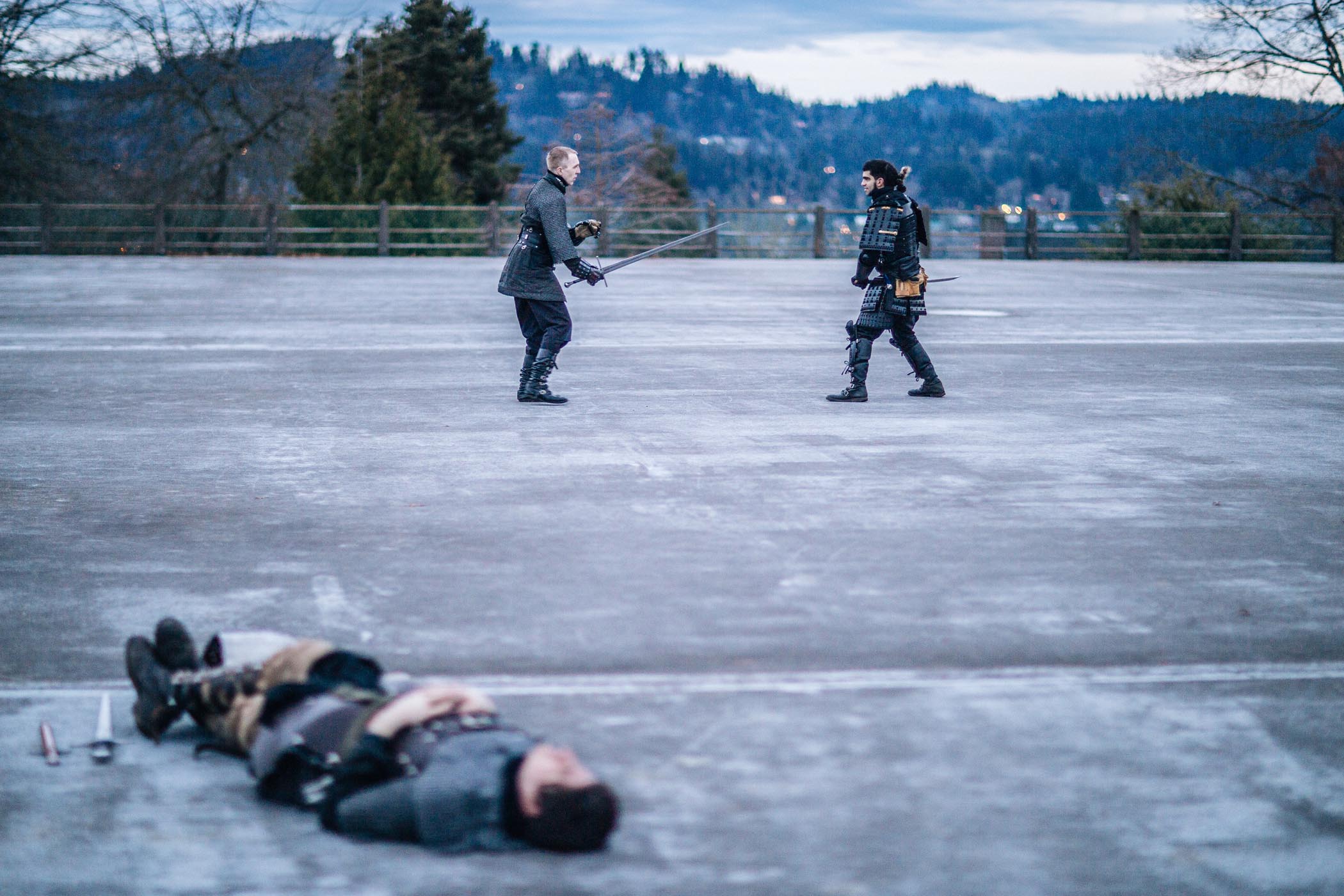
A day out with Eugene's Order of Steel includes a little tea, a march through downtown and intent swordplay.
If they can’t claw their way back several hundred years through time, the order contents itself to bring the Dark Ages with them wherever they go.
After a minute, Studenroth and a flush-faced Tucker James set their teacups on the ground, don heavy gauntlets and helms once more and square off in the center of the concrete expanse high above the city.
Meanwhile, David “Ronin” Herzog drops to the ground and pounds out a series of pushups while dressed in a suit of Japanese armor that weighs about as much as a sack full of bowling balls.
Ronin were wandering samurai in feudal Japan — men without masters.
Herzog took up Japanese sword fighting roughly ten years ago. He set aside all formal kenjutsu training after moving to Eugene a few years back because he couldn’t find an instructor who specializes in his particular discipline. Herzog sees himself as a swordsman without a master.
Herzog rounds out his warm-up exercises as James yields to Studenroth.
James staggers off to the edge of the dueling ground, removes his “sugarloaf” helmet and collapses flat on his back, exhausted.
The simple sugarloaf design resembles a shiny metal bucket that tapers to a point. You’ll see helmets like it in movies set during the Crusades.
The unventilated sugarloaf heats up fast, like a tiny sauna; sweat pours down James’ face.
With James out for the count, Herzog cycles into battle.
Nothing like Hollywood, the action here is methodical and anticlimactic. The swordsmen circle-stalk one another and stutter-step test enemy reflexes.
Sparks fly in the gloaming light when steel collides with steel. The tip of Studenroth’s blade punches against the scales of Herzog’s breastplate and raises bystander concern for his health and well-being.
The duelists first met on battlefields outside Lebanon, Oregon, many summers ago during the annual fantasy festival SeaDog Nights and Gypsy Carnival. Herzog and Studenroth joined forces and began calling themselves The Order of Steel only about a year ago.
“We grok,” Studenroth says.
Since forming The Order, Herzog and Studenroth have allowed in only two or three recruits. Depending how generous its core members feel at the moment, The Order says it’s four or five swords strong.
Herzog hesitated to return calls from EW, fearing any exposure might lure flocks of LARPing amateurs to his doorstep.
“We’re not LARPers,” James interjects. “We get that a lot.” The difference being: Live Action Role Players only pretend.
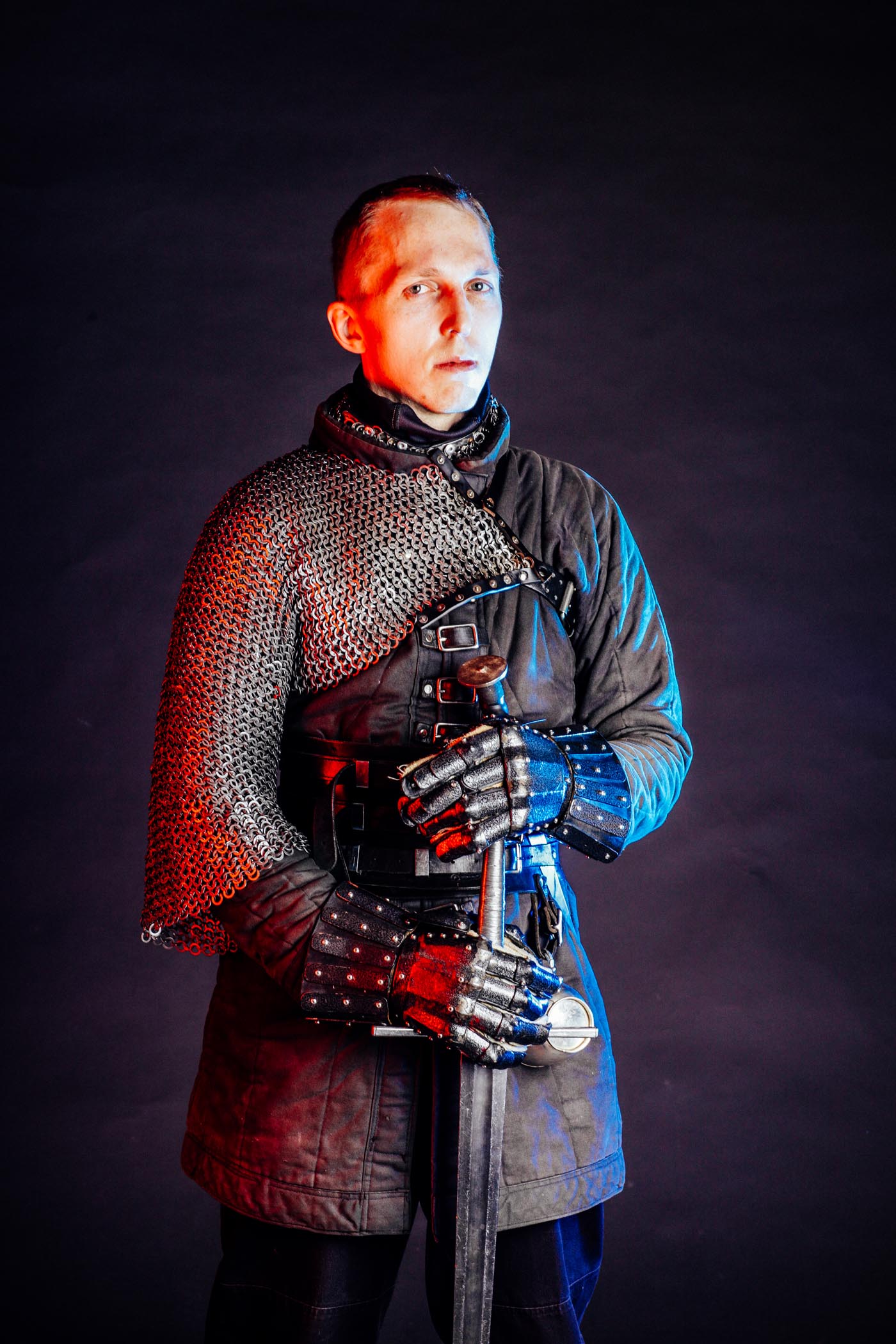
Trask Bedortha
'I always felt like a kid pretending to be a swordsmen. I decided I didn't want to pretend any more.'
Combined, The Order boasts more than four decades of classical weapons training.
To join, hopefuls must know their shit and come correct with years of martial arts instruction already on their curriculums vitae.
As well, The Order requires members to gather together a pricey list of safety equipment: steel gloves, helmet (or at least a heavy-duty fencing mask), as well as some kind of thick underlayering and, of course, a sword.
Those willing to invest in the right materials still have to wonder whether they’ve got the biscuits to venture out wearing such conspicuous gear.
The Order isn’t some flamboyant performance troupe for hobbyists and weekend warriors, Studenroth says. “Going anywhere becomes this weird thing,” he adds. “Try ordering a drink at bar with a sword in your hand.”
Any street gang covered in clanking armor, wearing medieval helmets that hide their faces completely, is bound to create a zone of marvel as it traverses downtown in tight formation on a weekday afternoon.
Workaday Eugeneans step aside to grant wide berth. Some cheer them on.
One pedestrian looks up from his iPhone long enough to register the collision course he shares with steel and leather man-mountain James. The man’s expression says “What the …”
At Townshend’s Eugene Teahouse a boy jittery with nerves asks if The Order will pose with his girlfriend long enough for him to snap a picture for his Instagram. Surprisingly, Studenroth and James oblige.
“It’s part of the iron price,” they joke flatly.
The other reason The Order thought twice before agreeing to be interviewed is that too often people miscategorize and underestimate them, taking them for Society for Creative Anachronism pranksters or Comic-Con types, Studenroth says.
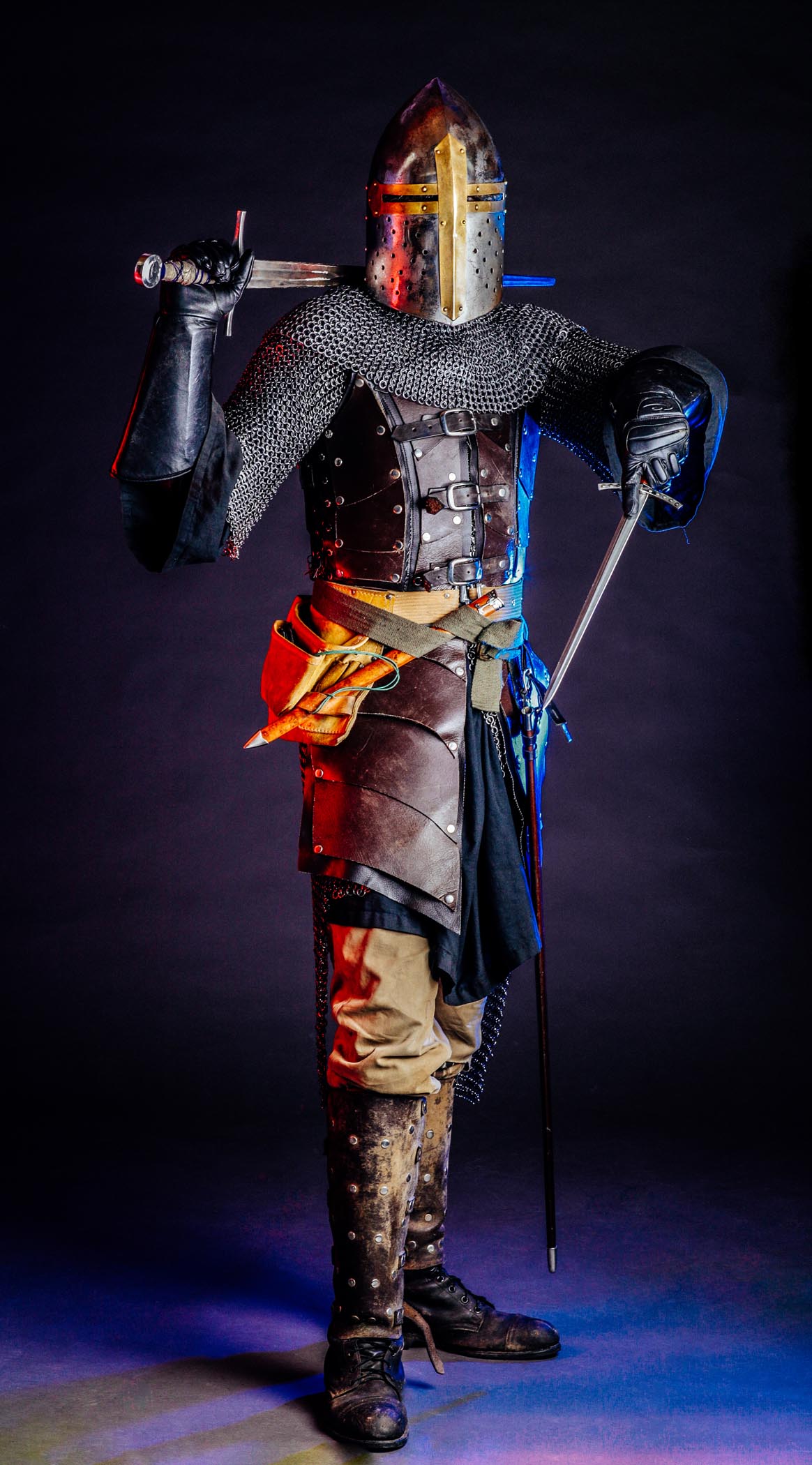
Trask Bedortha
“These people cannot come to terms with what we are,” Studenroth says, notes of pity (not self-pity, mind) in his voice and gesturing toward the herds of synthetic fleece-clad yuppies glued to computer screens seated all around them. “People think this has something to do with Monty Python.”
James nods in agreement.
The scar beside James’ left eye reminds him always how lucky he is to have vision in both eyes after a duel fought many years ago “with sharps” (sharp swords, instead of blunt practice blades) in Kaiser.
Herzog and Studenroth are marked with similar flesh wound mementos.
“I’m always fighting,” Studenroth says. “When I write poetry, I’m fighting. I treat everything like a fight. Living is a type of fight.”
Something about his precision of movement and speech signal that Studenroth might actually be a time traveler from long ago, coping as best he can with culture shock amid the relentless thrum of a digital age.
Laid off almost a decade ago after the economy collapsed, Studenroth is an out-of-work draftsman who pursued machining at Lane Community College for a short time but ultimately dropped out. That’s about when he decided to be a knight.
Formally trained for almost two decades in 14th-century Italian and German longsword technique, Studenroth says: “I always felt like a kid pretending to be a swordsmen. I decided I didn’t want to pretend any more.”
When his great helm arrived in the mail, bespoke by an armorer in the Czech Republic, Studenroth put it on his head, handed his friend a heavy steel sword and invited him to “ring the bell” with all his might.
Studenroth suffered a minor concussion, he says, but was impressed with the helmet’s durable make. Years of wear and tear have pocked Studenroth’s red great helm all over with ugly gouges.
Studenroth glories most in The Order’s modern Dark Age lifestyle. The extent to which The Order mingles with the modern world varies member by member.
They keep cell phones and active social media accounts. Flipping through Facebook on his phone at Townshend’s, James gets a kick out of seeing that someone moments ago posted a photo of him in full armor crossing the street this morning.
Herzog and James hold down day jobs. James says he’s known as “the knight of the kitchen” behind the supermarket deli counter where he works.
The Order occasionally ventures out sans armor to see a movie or play video games.
Holy writ is Cervantes’ Don Quixote and Melville’s Moby Dick. Ahab’s sui-homicidal cosmic revenge quest makes perfect sense to them.
“Ahab is the hero of that story,” Studenroth says.
They exalt also the unyielding 14th-century mercenary poet Gottfried von Berlichingen, known as “Götz of the Iron Arm” for having commissioned an articulate prosthetic appendage, designed to grasp both shield and quill pen, after being limbed by cannonade in the siege of Landshut.
Coming to terms with The Order’s zeal, you have to wonder if these dudes are dangerous to have around.
The Order says it has no quarrel with modern men, softened as such men have become after easygoing lifetimes of too much Pavlovian entertainment.
When, months ago, drunks in the Whiteaker harassed members of The Order outside Old Nick’s Pub, The Order stopped walking long enough for Herzog to ask the unruly belligerents “How do you think this will end?”
When UO frat jocks cruise downtown for easy prey, they sometimes mock The Order. It’s enough just to ignore them, Studenroth says, adding: “They are cowards. They don’t really want to fight.”
Besides, there’s really no honor in sending unarmed inebriates to hell early, Herzog explains.
The key is to “never flinch,” Studenroth says.
When he says “never flinch,” he’s talking about more than muscling through the instinct to wince when a samurai in black armor swings a steel blade in his direction.
It’s a question of “how much blood you bring” to what you are doing, Studenroth adds. “I bring all my blood to this. I will give more blood.”
Never flinch is The Order’s backbone. Without it, they’re just guys with swords.
Think of a thousand deaths, Studenroth says, before quoting the 18th-century Japanese text, the Hagakure.
“Every day when one’s body and mind are at peace, one should meditate upon being ripped apart by arrows, rifles, spears and swords. Being carried away by surging waves. Being thrown into the midst of a great fire. Being struck by lightning, being shaken to death by a great earthquake. Falling from thousand-foot cliffs, dying of disease or committing seppuku at the death of one’s master. And every day, without fail, one should consider himself as dead.”
Mortal ideation is the essence of the samurai way.
This, too, is the substance of The Order of Steel.
